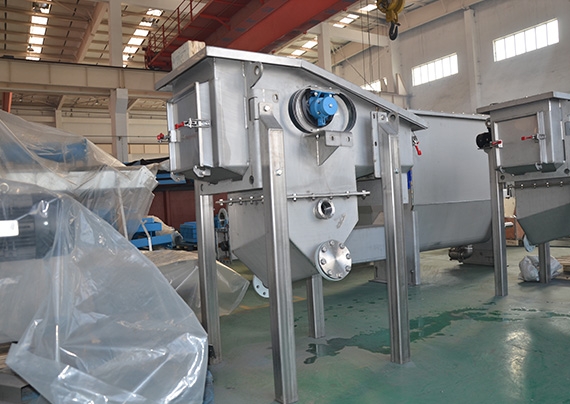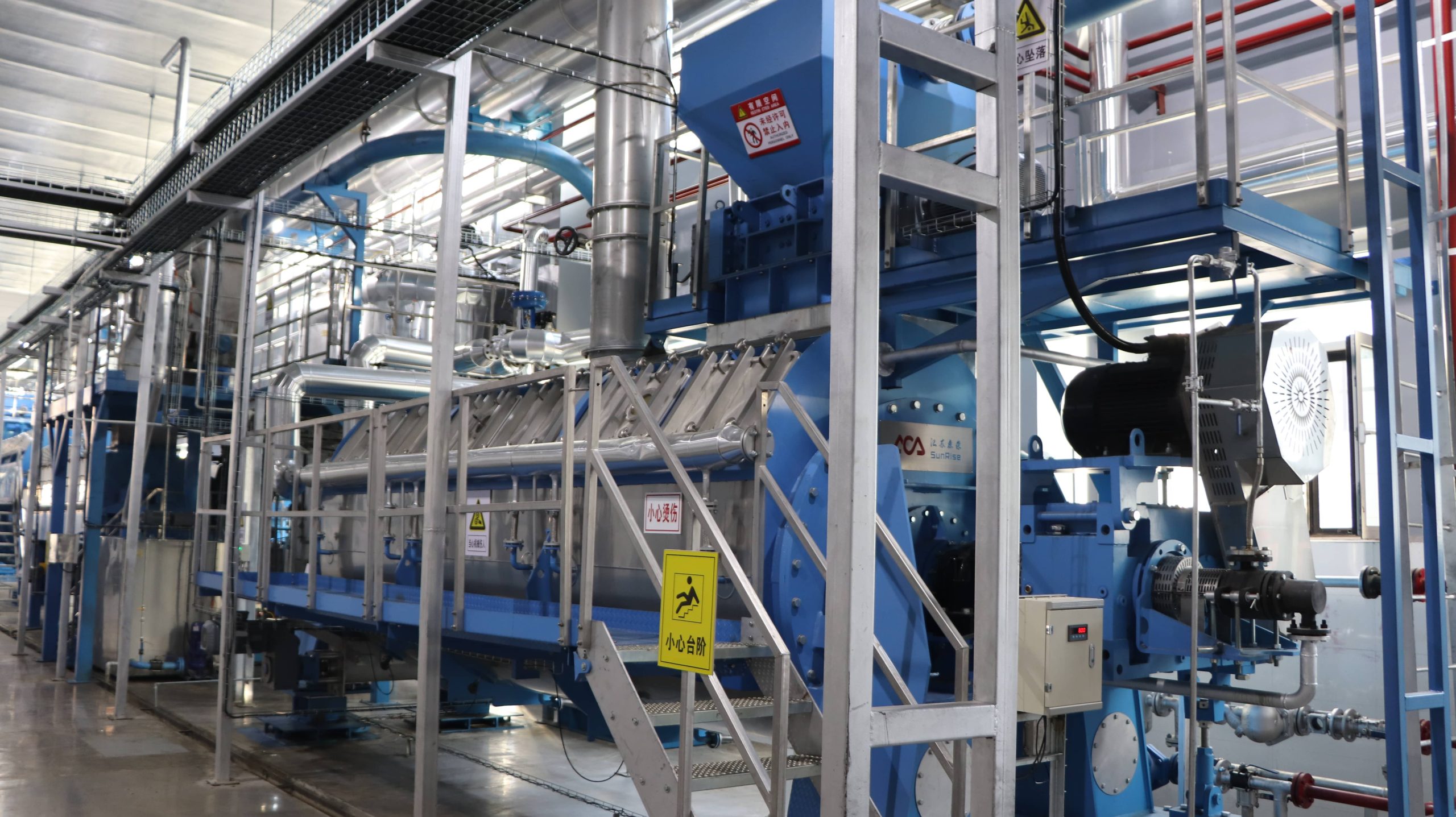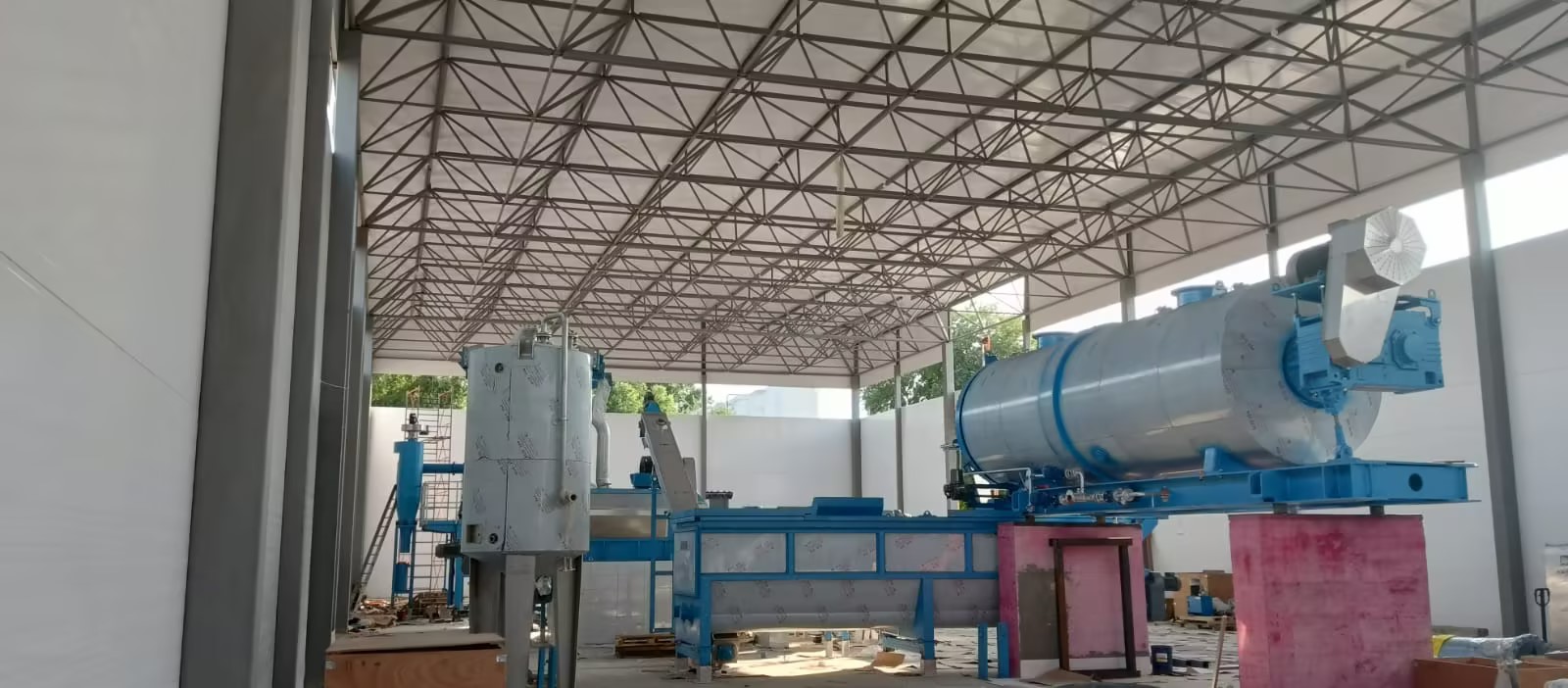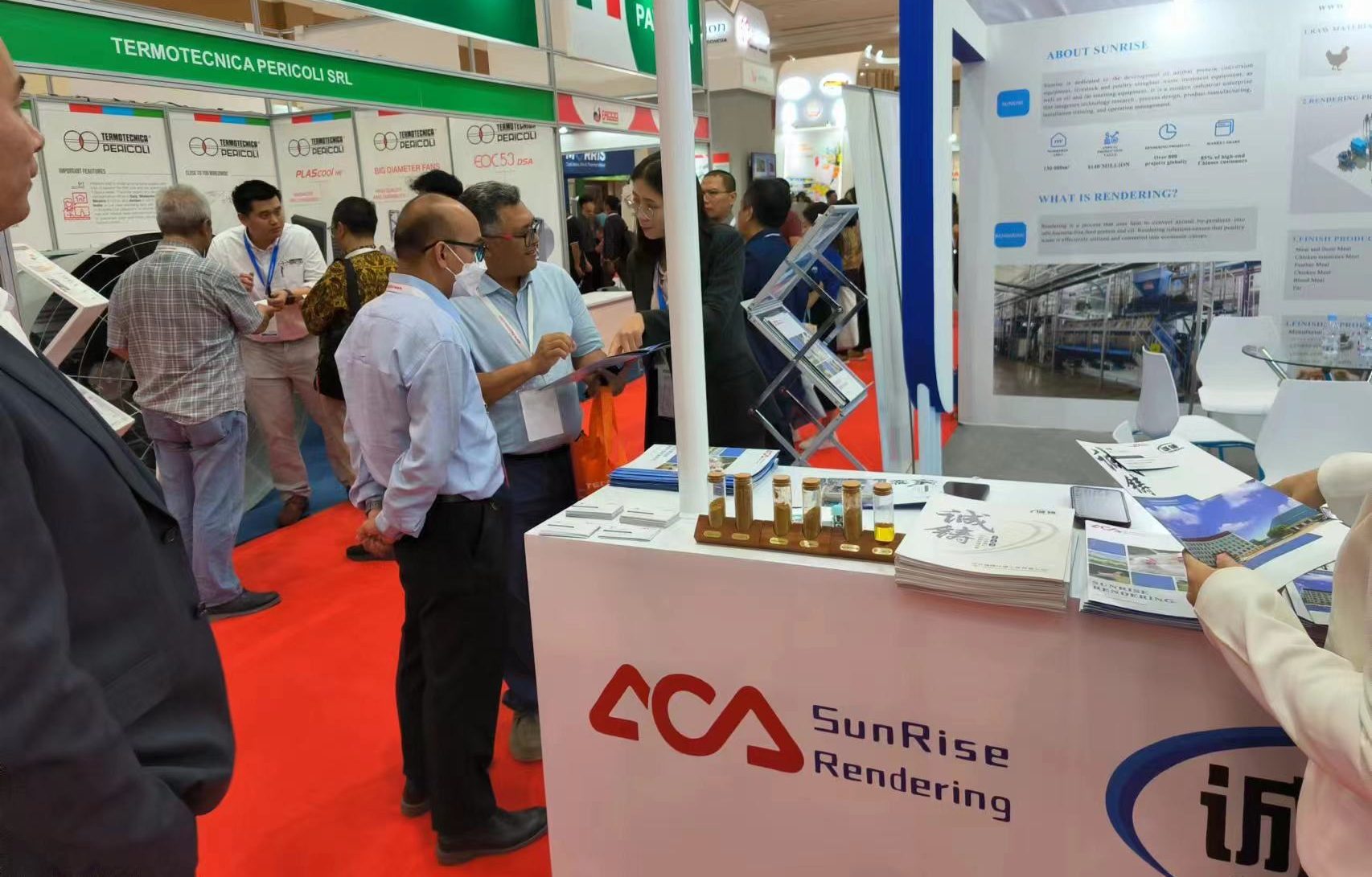
Revolutionizing Meal & Fat Rendering: Sustainable Plant-Based Solutions
Revolutionizing Meal & Fat Rendering: Sustainable Plant-Based Solutions
Within the realm of food processing, meal & fat rendering has stood as a time-honored pillar of culinary ingenuity. This age-old practice revolves around the extraction of vital fats and nutrients from diverse sources, giving rise to a rich array of culinary components and products. Yet, as our collective consciousness of environmental sustainability continues to expand, so does the pressing need for revolutionary shifts within this domain. The significance of sustainability in food processing cannot be emphasized enough. With our planet’s resources steadily diminishing, conventional rendering methods often exacerbate waste and the depletion of valuable resources. In an era characterized by mindful consumption and environmentally aware choices, it becomes paramount that we reexamine and adapt our approaches to the rendering plant of meals & fats.
The Challenges of Traditional Rendering
Limitations and Drawbacks of Conventional Rendering Methods
Traditional rendering methods, though steeped in tradition, exhibit a series of limitations and drawbacks that are increasingly conspicuous in today’s context. Foremost among these challenges is their environmental impact. Conventional rendering frequently relies on animal fats, a practice that not only raises ethical concerns but also significantly contributes to greenhouse gas emissions. In some cases, the extensive processing involved can result in a considerable carbon footprint.
Furthermore, these methods often yield excessive waste as they may not efficiently extract all available nutrients and fats. This profligacy not only harms the environment but also leads to economic inefficiencies for producers.
The Imperative for More Sustainable and Eco-Friendly Alternatives
Given the urgent need for sustainability in the food industry, there is a growing demand for eco-friendly alternatives to traditional rendering practices. As the adverse effects of climate change become increasingly apparent, it is paramount to diminish the environmental impact of our food production processes. Sustainable rendering methods emerge as a viable solution to address this challenge.
Sustainability transcends mere harm reduction; it encompasses the enhancement of overall efficiency. The shift toward eco-conscious rendering practices allows us to significantly reduce waste, lower greenhouse gas emissions, and cultivate a more resource-efficient system. This transformation aligns seamlessly with the overarching objective of minimizing our ecological footprint and safeguarding the long-term well-being of our planet.
The Plant-Based Rendering Revolution
Plant-Based Rendering as a Game-Changer
Welcome to the dawn of the plant-based rendering revolution—a paradigm shift poised to transform the landscape of meal and fat processing. Plant-based rendering, as a groundbreaking concept, stands as a potential game-changer within the food processing industry. Departing from the reliance on animal-derived fats, this innovative approach harnesses the latent potential of plants to yield essential fats and nutrients. By doing so, it not only addresses pressing environmental concerns but also aligns seamlessly with the surging demand for plant-based and vegan-friendly products.
Benefits of Plant-Based Rendering
- Sustainability
Plant-based rendering offers a sustainable and environmentally responsible alternative to conventional rendering methodologies. It mitigates the detrimental ecological impacts often associated with animal agriculture, leading to reduced greenhouse gas emissions and a mitigation of deforestation. The cultivation of plant-based sources for rendering generally imposes a lighter resource burden and allows for superior land and water management.
- Health Considerations
Beyond its ecological merits, plant-based rendering caters to health-conscious consumers. Products derived from plant-based rendering tend to feature lower levels of saturated fats and cholesterol, rendering them a healthier choice. Moreover, they are devoid of common allergens and accommodate a broader spectrum of dietary preferences, including vegetarian and vegan diets.
- Versatility in Plant-Based Options
Plant-based rendering bestows a wealth of options upon food processors and consumers alike. It facilitates the extraction of fats and nutrients from diverse plant sources, fostering culinary creativity and the inception of fresh gastronomic innovations. This adaptability in plant-based rendering empowers chefs and food manufacturers to craft healthier, more delectable, and environmentally sustainable products, all while accommodating the diverse needs of today’s discerning consumers.
Innovative Technologies and Techniques
Cutting-edge technologies and Techniques in Plant-Based Rendering
The domain of plant-based rendering stands as a hub of cutting-edge technologies and techniques that are revolutionizing the processing of meals and fats. These advancements lie at the heart of a sustainable transformation taking place within the food industry.
Plant-based rendering frequently employs state-of-the-art extraction methods designed to efficiently separate fats and nutrients from plant sources. For instance, high-pressure processing, a technique involving extreme pressure applied to plant materials, yields valuable oils and fats without the need for chemical solvents. This approach not only guarantees the purity of extracted substances but also substantially reduces environmental impact by eliminating the use of harmful chemicals.

Another pioneering method is enzyme-assisted rendering, which relies on the natural properties of enzymes to break down plant materials and release essential fats and nutrients. This technique not only adheres to eco-friendly principles but also maximizes the yield of valuable components.
Enhancing Efficiency and Reducing Environmental Impact
These innovations in plant-based rendering deliver a dual benefit: they enhance efficiency while concurrently diminishing the environmental footprint. The adoption of cutting-edge technologies significantly improves the efficiency of the rendering process, resulting in higher yields of essential fats and nutrients from plant sources. Consequently, this translates into less waste and optimized resource utilization.
Moreover, the reduction in waste and the elimination of chemical solvents and other harmful substances contribute markedly to a substantial decrease in the environmental impact of plant-based rendering. The outcome is a rendering process that closely aligns with sustainability principles, curbing greenhouse gas emissions, preserving resources, and minimizing harm to ecosystems.
Applications and Benefits
Diverse Applications of Plant-Based Rendering in the Food Industry
- Reducing Waste
Plant-based rendering plays a pivotal role in waste reduction within the food industry. By effectively extracting fats and nutrients from plant sources, it curtails the disposal of unused materials and significantly diminishes overall waste generated during food processing. This not only benefits the environment but also reduces disposal costs for food manufacturers.
- Enhancing the Nutritional Value of Meals
Plant-based rendering possesses the potential to enhance the nutritional value of meals. Extracted fats and nutrients can be incorporated into various food products to augment their health benefits. This includes fortifying foods with essential fatty acids, vitamins, and minerals, thereby contributing to overall nutrition and well-being improvement.
- Creating Healthier Food Products
The plant-based rendering revolution fosters the creation of healthier food products. With lower levels of saturated fats and cholesterol, foods derived from plant-based rendering cater to health-conscious consumers. Additionally, these products are often allergen-free and accommodate a broad spectrum of dietary preferences, promoting inclusivity and accommodating vegetarian and vegan diets.
The Overall Positive Impact on Sustainability and Food Quality
The adoption of plant-based rendering methods signifies a significant shift towards sustainability within the food industry. This transition is marked by a reduced ecological footprint, decreased greenhouse gas emissions, and improved land and water management. It is in harmony with the global imperative to embrace environmentally responsible practices and ensure the long-term viability of our food production systems.
Furthermore, the improvements in food quality ushered in by plant-based rendering are evident in the creation of tastier, healthier, and more sustainable food products. As the demand for sustainable, plant-based options continues to soar, the food industry responds with innovative solutions that benefit both consumers and the planet. In this new era of conscientious consumption, plant-based rendering serves as a beacon of hope for a greener, healthier, and more sustainable food future.
The Future of Sustainable Food Processing
The outlook for sustainable food processing is increasingly optimistic, particularly given the rising adoption of plant-based rendering techniques. These techniques mark a transformative approach to food processing, concentrating on minimizing environmental impacts while addressing the escalating worldwide food needs.
Plant-Based Rendering Techniques
- Innovations in Plant-Based Cuisine: The increasing popularity of plant-based diets is driving innovation in food processing. Using plant materials to replicate products traditionally derived from animal sources, like meat and dairy, plant-based rendering reflects significant advances in food technology. This enables the creation of similar textures and flavors to those in animal products but with a markedly reduced ecological footprint.
- Ecological Advantages: By lessening dependence on livestock, a key source of greenhouse gas emissions, plant-based rendering contributes significantly to environmental conservation. It also reduces the strain on water and land resources, as growing plants typically demand less of these resources than animal husbandry.
- Health Implications: This approach is in line with increasing consumer consciousness about health and wellness. Plant-based products are often lower in harmful saturated fats and cholesterol, fitting into a trend towards healthier eating habits.
Consistency with Global Sustainability Efforts
- Minimizing Carbon Emissions: Confronted with the need to lower its carbon footprint, the global food industry finds a viable alternative in plant-based rendering, which generates fewer greenhouse gases than conventional animal-based processing.
- Efficient Use of Resources: These methods encourage the judicious use of natural resources, necessitating less land and water, thereby aiding in their conservation for future use.
- Catering to Consumer Preferences: The demand for sustainable, ethically produced food is on the rise. Plant-based options cater to these preferences, providing choices that resonate with consumers’ values.
- Policy and Regulation Support: Governments and global organizations are increasingly endorsing sustainable food processing methods, including plant-based approaches. They recognize these methods as instrumental in addressing climate change and enhancing global food security through policies and incentives.
CONCLUSION
In summary, the transformation in meal & fat rendering via sustainable plant-based methods signifies a significant evolution in the food industry. Adopting these environmentally friendly practices not only mitigates ecological issues but also resonates with current health trends and the growing consumer preference for sustainable options. This transition is vital for a more accountable and efficient future in food processing. Concurrently, Sunrise positions itself as a leader in this realm. As an all-encompassing environmental technology company, we focus on areas such as animal protein, oil, nutrition, food, biotechnology, and solid waste management. By assimilating and enhancing a century of European technology in equipment manufacturing, project processing, and management, our commitment extends to expansive growth in global markets. We dedicate ourselves to delivering superior services and crafting bespoke solutions for our clients.



